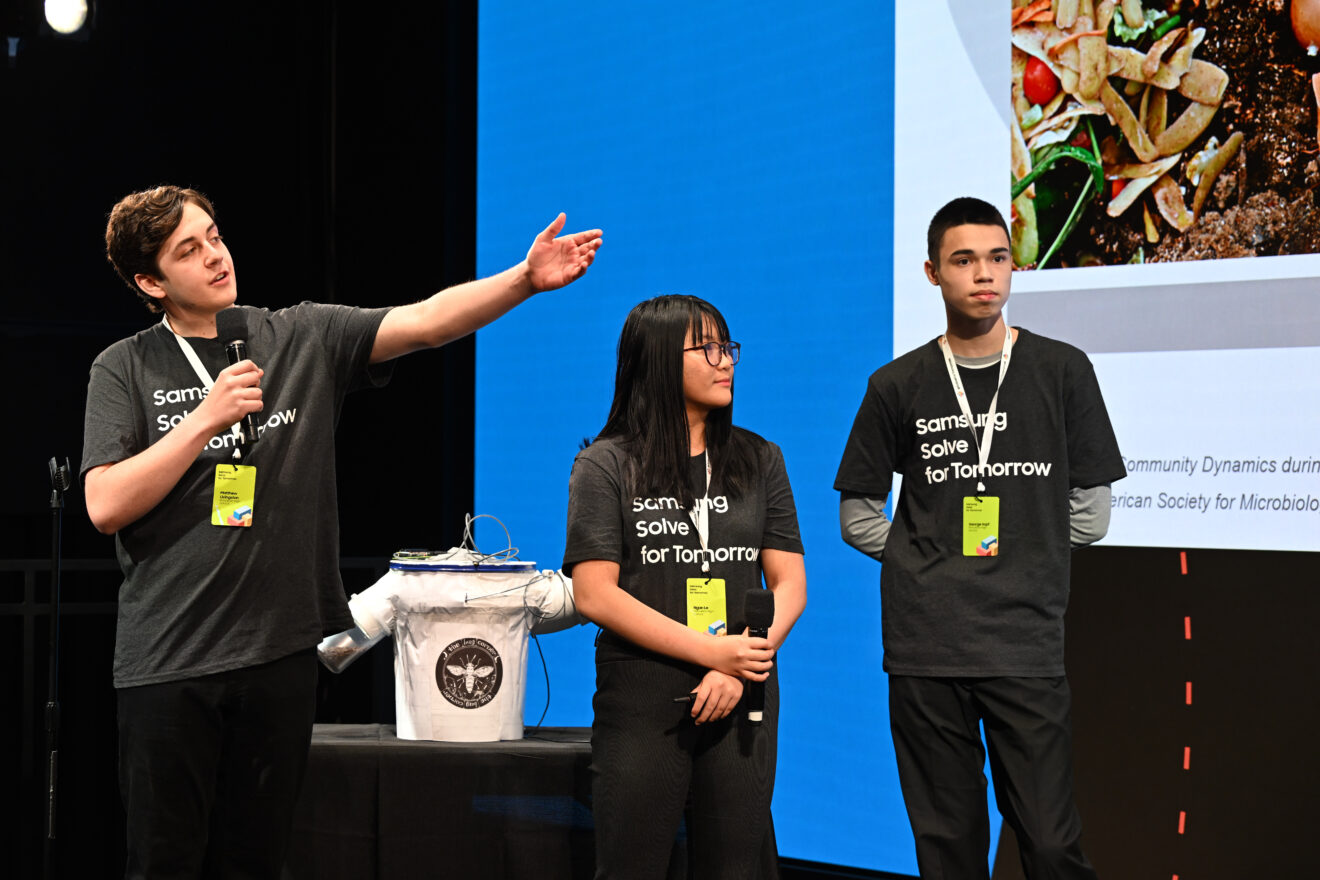I love reading about the remarkable ideas teachers and students come up with for STEM projects, but rarely do we find out what happens to those projects after students present them — and especially after participating in national STEM competitions. Once the prizes have been awarded, what comes next? Do their ideas go into production or are they just another school project relegated to their (or their parents’) social media histories?

I checked in with Mark Eastburn, a science, research and engineering teacher at Princeton High School in New Jersey, whose class was a national winner in the 2021-22 Samsung Solve for Tomorrow STEM competition. Eastburn, who has written about STEM, says his students not only kept their project running, but they’ve also been turning it into a business that generates revenue to support STEM programs at the school. He elaborates on why he thinks creating social enterprises like theirs will be an important part of the future of STEM education.
Our Q&A is lightly edited for length and clarity.
SmartBrief: Can you give us a quick overview of your winning STEM solution and the local community issue that it addressed?
Eastburn: We wanted to reduce food waste — a global issue that is particularly problematic in the US. Much of the food we throw away here ends up decomposing in landfills and creating methane that is 30 times more potent than CO2 in terms of warming up the atmosphere. There are several large landfills near Princeton venting methane and fueling global warming. Traditional composting with worms doesn’t solve this: Worms can’t digest a lot of the American diet — like meat, cheese and yogurt.
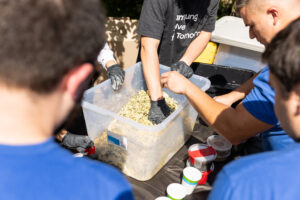
My class is a research class, and as the students investigated, they learned about a tropical insect called the black soldier fly. Their larvae are very efficient decomposers of organic matter and will eat anything that humans eat.
We began by collecting food waste and building some basic equipment where we could bioremediate the waste with black soldier fly larvae. This innovative approach allowed my students to transform the waste into useful products. Their solution not only earned them a National Winner title but also garnered the Employee Choice award, as voted by Samsung employees.
SmartBrief: You told me earlier that the students have created a sustainable enterprise based on their project. What was their motivation for that?
Eastburn: Once the food waste was broken down, we needed to find uses for the larvae. They make good animal feed, so we started feeding them to chickens at a farm off campus.
But looking more deeply into what else we could do with the larvae, we found that they’re 30% protein, 40% oil. The oil is similar to widely used but ecologically destructive palm oil. Looking at our relatively high-quality animal oil, could we use it to replace palm oil in some products?
Our students began experimenting with applications for the larvae. I’ve asked one of them, Daniela Gonzalez — who is now a senior, drove the initial research and was instrumental in keeping the project going — to be here to tell you herself more about what inspired her.
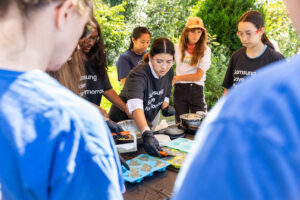
Daniela: Our original inspiration was always about helping: helping people, helping fight global warming. Then, I saw a paper about palm oil’s negative environmental impact.
Another teacher heard we were looking at palm oil replacements and mentioned she had a home soap-making kit that used palm oil. I’m very health conscious, and making a natural soap had great appeal. We experimented with various formulas, combining sustainable oils like coconut oil with ours to create a more effective cleaning and disinfecting soap than palm oil alone.
After researching pricing for beauty soaps in pharmacies, we found that our low raw material cost let us price at a nice margin — and saw the business potential in our product. In Princeton, we found support from the community and a local store that allowed us to sell our soap, which quickly sold out. Little by little, we were in business.
Then, to drive sales, we launched our own website, named Sol Feliz, which means happy sun.
SmartBrief: Mark, is that the end result of the students’ STEM competition project, or has it continued to evolve?
Eastburn: After starting with a general “help reduce carbon emissions” goal, identifying products where we can sustainably replace palm oil became our main focus. Other students started hopping on board, and we began investigating how we can improve our products.
One student delved into the sourcing of our colorants, mica powder, which had a history of labor concerns. They uncovered a sustainable, family-owned supplier for mica powder. Additionally, we now extract rose oil from our garden and cultivate lavender for our fragrances. Our students have become very attuned to what impacts our raw materials have.
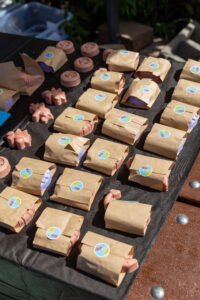
SmartBrief: What’s been the effect of being a national STEM competition winner on the students, the school and the community?
Eastburn: Tremendous. As the word spread and the community responded positively, more students expressed interest in getting involved.
Under Daniela’s leadership, a cohesive group has formed, working not only to sustain our food waste program but also to explore other opportunities. They established a club called Science to Startup, a name our student Raya Kondakindi came up with. She’s a 10th-grader who leads our floral oils project for the soaps.
The students are expanding their efforts by sourcing food waste from local restaurants, constructing a larger greenhouse to store biological supplies over the winter, and reaching out to farmer’s markets to sell Sol Feliz soap.
I think success builds upon success, building skills and confidence along the way.
Students who contribute and show a commitment to the club are encouraged to apply for the Princeton High School Research Program. This has happened with several students this year and will continue as we keep growing. The Princeton High School Research Program has gone from approximately 60 students when I first arrived to 140 at present, largely because of the reputation and the opportunities for students to do hands-on STEM.
SmartBrief: What about the revenue? Is that going back to the school, or is it used another way?
Eastburn: Science to Startup primarily generates revenue by selling soap instead of traditional club activities like crafts or bake sales. It’s a fundraising activity, and the funds support greenhouse construction, material purchases, promotion, SolFeliz.com website maintenance and Shopify fees.
But the challenge for school clubs is always the summer. Once we reach critical mass, we may be able to compensate students for summer work, ensuring a consistent revenue stream and program continuity.
SmartBrief: Do the students plan to expand or scale the company further?
Eastburn: Did I mention our chickens? Instead of sending the fly larvae to a farm to feed their chickens, we’re now raising chickens ourselves and selling the eggs. We have three orders to deliver today.
What’s remarkable is that this started as a science and research class but has grown beyond that. We’re considering splitting the Sol Feliz soap business from the Science to Startup club to nurture other entrepreneurial ideas. Science to Startup will be the umbrella, with various projects falling under that brand. Students are even learning business planning and marketing.
It’s getting to the point where, if we keep growing, we probably can’t just stay at the high school. We might have to move off campus, offering students more opportunities to establish businesses.
And while Princeton may have a wealthy community image, many of my students need jobs to survive but are working in restaurants or other demanding positions. If we could offer more supportive work aligned with their studies and career aspirations, that would be a valuable option.
The skills my students are developing are real-world, practical and have a meaningful impact.
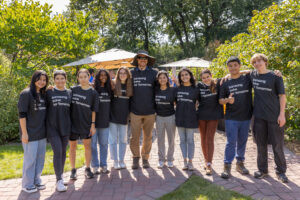
SmartBrief: What advice would you give other educators or schools looking to empower students through these types of STEM projects or sustainable ventures?
Eastburn: First things first: As STEM teachers, we’ve got to break the curriculum and stop teaching to the test. We need to embrace problem-based learning, because that means we’re identifying real problems that need to be fixed. And that’s what life is: a lot of problem-based learning.
After that, we must acknowledge that shifting to a problem-based focus is challenging, requiring investment and effort, with solutions varying across schools.
For STEM teachers, finding the time for this shift is a formidable task. I’m very lucky, as I have a research program where students are encouraged to pursue projects that are meaningful to them. It is chaotic and even frustrating at times, but it’s what I think I’ve always wanted to do — generate memorable, meaningful experiences for my students.
That’s where introducing students to entrepreneurial skills comes in — showing them how to use their creativity to create their own opportunities. This approach makes STEM highly engaging, even with numerous alternative paths available.
And for me, I feel it’s my job to prepare the next generation for whatever challenges may come, especially when we don’t necessarily know what’s coming.
I’ll add that this emphasizes the value of entering STEM competitions. For instance, our Solve for Tomorrow award package enabled us to buy our first greenhouses, a step change that really set us on the path to enterprise formation.
The Samsung Solve for Tomorrow STEM competition that the Princeton High students entered is accepting entries now through Oct. 27 for its next round.
Diane Benson Harrington is an education writer at SmartBrief. Reach out to her via email, Twitter or LinkedIn.
Opinions expressed by SmartBrief contributors are their own.
_________________________
Subscribe to SmartBrief’s FREE email newsletter to see the latest hot topics on edtech. It’s among SmartBrief’s more than 250 industry-focused newsletters.
